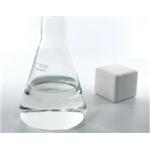What is the application of 1,4-Dioxane?
Oct 13,2021
1,4-Dioxane was first identified in 1863 and became available for commercial use in the 1930s as a solvent in cellulose acetate and plastics manufacturing. 1,4-Dioxane was used as a stabilizer for chlorinated organic solvents, beginning in the 1950s. Groundwater contamination has been an issue of concern near hazardous waste sites contaminated with chlorinated solvents, due to the high degree of mobility of 1,4-dioxane in soil and water systems. 1,4-Dioxane is a contaminant of ethoxylated surfactants, leading to additional concerns about the concentration of this chemical in detergents, shampoos, and cosmetics. There are many current industrial uses of this chemical as a solvent or chemical intermediate, resulting in exposure to occupational workers.

Mechanism of Toxicity
Eye and respiratory irritation occurs from direct contact of 1,4-dioxane with mucous membranes. Pharmacokinetic and toxicological data indicate that liver and kidney toxicity induced by 1,4-dioxane occurs only after doses large enough to saturate processes for detoxification and elimination. 1,4-Dioxane is one of many carcinogens that have not been demonstrated to react significantly with DNA. Its cancer mode of action is not sufficiently well understood to permit assignment to a specific class of epigenetic agents. However, the data suggest a tumor promotion mechanism associated with tissue injury and subsequent regeneration.
Application
1,4-Dioxane is used as a solvent and solvent stabilizer, degreaser, wetting and dispersing agent, liquid scintillation medium, polymerization catalyst, in drug purification, and to extract animal and vegetable oils. It is used as a solvent for cellulose acetate, nitrocellulose, and other cellulose esters or ethers; fats, oils, waxes, and mineral oil; natural and synthetic resins; and polyvinyl polymers.
1,4-Dioxane is an ingredient or chemical intermediate in the manufacture of cleaning and detergent preparations, adhesives, deodorant fumigants, plastics, rubber, insecticides, herbicides, polishing compositions, lacquers, paints, varnishes, paint and varnish removers, printing compositions, and dye baths. It has been used in the embedding process for the preparation of tissue sections for histology. In addition, 1,4-dioxane is a contaminant of ethoxylated surfactants such as polyethylene glycol (PEG) that are used in personal care products and cosmetics. Vacuum stripping processes intended to remove 1,4-dioxane are generally applied prior to formulation of surfactants for use in these products.
In the past, a major use for 1,4-dioxane was for the stabilization of chlorinated solvents, primarily 1,1,1-trichloroethane (1,1,1-TCA). However, production of 1,1,1-TCA was restricted in 1995 under the Montreal Protocol on Substances that Deplete the Ozone Layer; therefore, current use of 1,4-dioxane for this purpose is expected to be low.
- Related articles
- Related Qustion
- Uses of 1,4-Dioxane Jan 19, 2022
1,4-Dioxane was first identified in 1863 and became available for commercial use in the 1930s as a solvent in cellulose acetate and plastics manufacturing. 1,4-Dioxane was used as a stabilizer for chlorinated organic solvents, beginning in
- 1,4-Dioxane-Hazard and Toxicity Sep 5, 2019
1,4-dioxane is a clear liquid with ether-like odour. It is highly flammable and forms explosive peroxides in storage (rate of formation increased by heating, evaporation, or exposure to light). 1,4-Dioxane is incompatible with oxidising age
DMM has limited use because of its toxicity but can be used to calibrate research equipment, as in its application as a standard reference material for 199Hg NMR measurements.....
Oct 13,2021Organometallic compoundsMarine algal blooms, natural phenomena produced by the overgrowth of microscopic marine algae, have become a public health concern because of their increasing frequency and severity.....
Oct 13,2021Chemical Reagents1,4-Dioxane
123-91-1You may like
- The toxicity of Triethylene glycol
May 14, 2024
- Is 1,4-benzoquinone a toxicity compound?
May 11, 2024
- The Synthesis method and Toxicity of 18-Crown-6
May 10, 2024
- 1,4-Dioxane
-

- $2740.00 / 1ton
- 2024-05-24
- CAS:123-91-1
- Min. Order: 1ton
- Purity: 99%
- Supply Ability: 5000ton
- 1,4-Dioxane
-

- $50.00 / 1KG
- 2023-12-23
- CAS:123-91-1
- Min. Order: 1KG
- Purity: 99%
- Supply Ability: g-kg-tons, free sample is available
- 1,4-Dioxane
-

- $10.00 / 1kg
- 2023-07-31
- CAS:123-91-1
- Min. Order: 10kg
- Purity: 99%
- Supply Ability: 20tons




